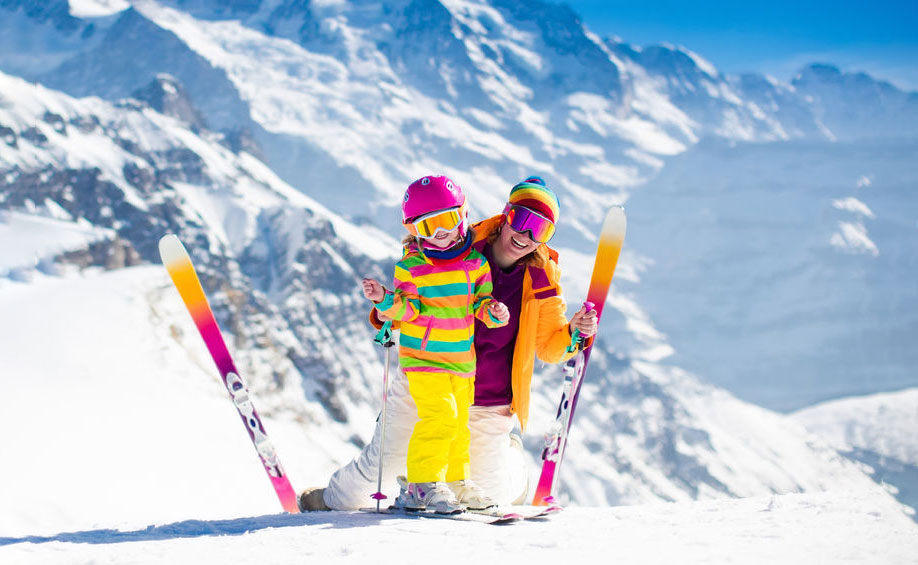This year, winter’s beginning was disappointing in the Alps. In December, the Swiss region of this majestic kingdom of skiers experienced the least snow in over one-hundred years. The weather improved in January when ski conditions improved marvelously. However, in recent years the winter season has been shorter by approximately one-month than it was forty or fifty years ago.

Judging by TV reports from ski tournaments, one could assume that the Alpine conditions are very positive. However, in the areas where filming didn’t take place, there was essentially no snow. Snow used for tournament purposes was transported down the mountain from its highest peaks. This was the only method that could be used, because there was no snowfall and temperatures were too high for snow cannons.
A shorter ski season
November’s blizzards caused tourists, as well as Alpine ski resort owners, to be optimistic toward an earlier start to the season. However, December brought the lowest amount of snow in one-hundred years. Many Alpine ski resorts closed their ski routes and ski lifts over the Christmas season. Moreover, the conditions for winter sports were much better in the Tatras at that time.
Climatologists declared that the dry December was caused by high air pressure. This may be an indication of significant climate changes in the Alpine region of Europe. In his interview with Bloomberg.com, professor Martine Rebetez of the University of Neuchatel (who has been verifying the data from eleven Alpine weather stations), said that the ski season starts eleven days sooner and ends twenty-six days sooner than it used to in 1970.
What is the reaction from the tourism sector? One British travel agency allowed its customers to re-book their stays to locations with better skiing conditions. Another draw to encourage tourists to visit is to include free transport from hotels to resorts in their travel offers.
Breathe the Alpine air
Luckily for skiers, as well as everyone who makes a living out of the winter tourism, January has been generous with snowfall. The attendance levels in ski resorts has been similar to that of last year. When the weather is favorable, Switzerland turns into a paradise for tourists. It amazes with picturesque views and skiers can use perfectly prepared, modern and diversified ski routes. This country has approximately 7300 km of ski routes (twenty-five times more than Poland). However, the phenomenon that is freeriding has been becoming increasingly popular recently. This is a method in which skiers and snowboarders use unmarked ski routes.
Switzerland is famous for its beautiful mountains, fresh air, quality watches, banks, cheese, chocolate and ski areas. The largest, as well as the most famous, ski areas are: St. Moritz (350 km of routes), Veysonnaz - Nendaz (200 km of routes), Laax (180 km of routes) and Crans-Montana – Aminona (140 km of routes). These areas have much more to offer than the basic ski slopes and ski lifts. They also encourage tourists with waterparks, skating rinks and curling courses. Moreover, you can take a ride on a snowmobile or a dogsled.
In the shadow of Matterhorn
A six-day ski pass in the main regions of Switzerland cost approximately 150-350 Swiss francs (CHF). What about accommodation prices? They can be very high in St. Moritz, which is the oldest and one of the most exclusive European ski resorts. A weekend stay in a double room costs up to a few thousand francs. There are many places where prices are similar, but there is no place in Europe with as many mountains like Matterhorn (4478 m.a.s.l.), which was conquered for the first time in July, 1865.
A car-trip from Poland to Switzerland will take approximately fifteen hours, regardless of whether you decide to go through Germany, or through the Czech Republic and Austria. Fuel and groceries are more expensive than they are in Poland. One liter of fuel costs 1.4 CHF (approximately 6 PLN), bread costs more than 2 CHF (approximately 9 PLN), butter costs more than 3 CHF (approximately 13 PLN), dinner at a ski resort costs 10-15 CHF and coffee or beer costs approximately 5 CHF. The franc’s exchange rate is very strong against the zloty. - In January 2015, before the Swiss central bank made its decision regarding releasing the franc’s exchange rate against the euro, the Swiss currency was at the level of approximately 3.55 PLN. However, this level seems impossible to reach today. During the course of the last two months of 2016, the franc has been gaining value against the zloty and has now reached the level of approximately 4.08 PLN. If the global situation is neutral for the zloty, this may strengthen the zloty against the franc, which would then be pushed to approximately 4 PLN – explained Bartosz Grejner, analyst of Cinkicarz.pl - leader in the online currency exchange market.



